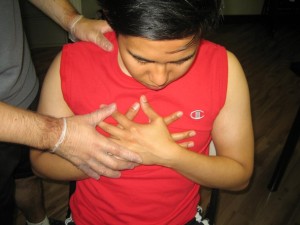Rowing is considered an unusual sport in which the individual is seated facing the stern of the boat with both feet anchored in sneakers that are attached to a foot stretcher. It is important to note that the rowing stroke is a continuous repeated cycle from a position in which the legs are extended, elbows flexed and the oar handle is drawn into the body. The shoulder, back and arms serve as connections so that the force produced by the legs is applied to the oar.
Causes of rowing injuries
Most cases of rowing injuries are triggered by overuse. Any sudden changes in the technique, training level or type of boat used as well as the abrupt increase in the training intensity can contribute to injuries. Many of these rowing injuries usually affect the forearm, wrist, knee, rib cage and the lumbar spine.
Common rowing injuries
Extensor tenosynovitis of the wrist
When it comes to this injury, it typically occurs in early spring among those who return to high-intensity rowing in cold weather. This condition is linked with swelling, pain and crepitus in the wrist. There is pain while rowing and other activities such as writing.

The treatment involves the use of a cock-up wrist splint while not rowing, application of ice and anti-inflammatory medications. Local cortisone steroid injections might be useful as well. The key is to keep the wrist and hand as warm as possible while rowing. Long-sleeved shirts and fleece covers that wrap around the wrist as well as the hand and oar while rowing in cold weather must be used.
Rib stress fractures
The pain along the rib cage is also a common complaint among rowers. In most cases of rowing injuries, they usually include rib stress fractures. The usual site of the break is at the junction of the middle and back one-third of the rib. The fractures typically occur during instances of intense training in the winter and early spring when rowers spend a lot of time on the rowing ergometer with a low stroke rate and intense load per stroke.
In most cases, this injury presents itself with chest wall achiness before progressing to soreness. Being aware of the onset and reducing the training intensity can prevent the injury from progressing to an acute fracture. Once a fracture occurs, there is piercing pain that worsens with deep breathing, coughing, rolling over in bed or changing position. The fracture is distinguished in an X-ray and a bone scan is required to confirm its presence.
Low back pain
Many rowers experience low back pain. The pain can radiate up to the buttocks due to a possible injury to the lower back disc. In such cases, the individual might complain of pain while sitting in class and at the finish of the rowing strokes with the legs extended.
Knee pain
Patellofemoral pain is usually present when the individual ascends or descends stairs. Even training exercises such as squats can worsen the pain. The treatment involves anti-inflammatory medications and a stretching program focused on the anterior hip, iliotibial band and the quadriceps.
